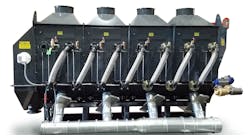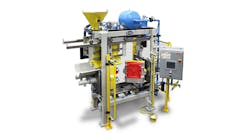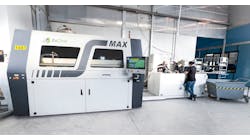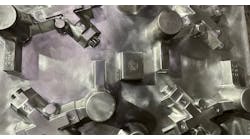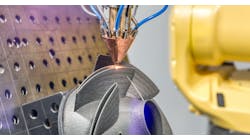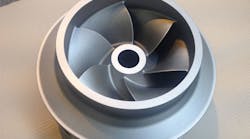Precision parts are a prize contract for any manufacturer, and something of an ongoing problem: there is the steady demand to maintain tolerances for size, gauge, performance, etc., and lately there is the challenge of fending off emerging technologies that promise more efficiency, more accuracy, etc. For producers of castings, those challenges have never been more relevant.
Casting Technology International Ltd. (Cti) is managing the challenge well. Cti developed the Replicast® process to overcome the quality and machining problems associated with sand-molded steel castings, and to avoid the carbon pick-up from polystyrene patterns in standard lost-foam processes. The developers’ goal was to achieve the high standards of integrity, surface finish, and precision of lost-wax casting for larger and heavier castings than could be made with standard lost-wax technology. This was achieved by replacing wax patterns with one patterns made from polystyrene (formed as a precise replica of a customer’s casting) on which a thin ceramic mold is produced.
Cti, a British manufacturer of specialty cast products, developed and commercialized Replicast, and recently recognized the process could be applied for a particularly demanding type of cast products: impellers for heavy-duty pump systems Increasing pressure to improve the performance of such pumping equipment, and to reduce costly down time for the operators, established the opportunity to apply the novel casting process to produce on of the pumps’ important component parts.
Impellers are a crucial part of a pump’s overall efficiency, but ensuring their blades are perfectly balanced and provide a suitable surface quality, thickness and geometry to ensure a long service life, delivering maximum flow rates, is difficult to achieve using traditional casting processes. It is not unusual for blade thicknesses to vary, when impellers are made using sand molds and, although they can be dynamically balanced in air, that does not mean they will remain balanced during operation, when pumping a fluid.
Improving the surface quality of the impeller’s blades is also difficult, and expensive, because protective shrouds severely restrict access.
Besides producing precision castings, another Cti specialty is conduction process research to help casting manufacturers to solve problems and improve production. While it supplies high-value manufacturers with low-volume, precision steel, superalloy and titanium castings that would otherwise be difficult to source; it also provides advanced casting expertise, including computer process modeling, design for casting manufacture, casting process development, environmental, laboratory investigation, testing services and materials optimization. These capabilities are in addition to customized technology packages for all alloys and casting processes.
Cti has advanced the Replicast process so that it can produce impellers that have inherently challenging narrow passageways that are critical to a pump’s operation. As a result, the casting process can be used now to produce impellers that are correctly balanced, up to a meter in diameter, with high dimensional accuracy and superior surface finish.
According to the process experts, it seemed at first that the lower cost of impellers made using more common casting processes limited demand for Replicast impellers. However, that is changing following recent process optimization: the cost of producing the impellers has been reduced by around 30%, which is shifting the focus among pump users and manufacturers toward the total cost of pump ownership and ‘up time’ (i.e., the time available in service, rather than in repair or replacement.)
According to Cti, at least one manufacturer is focusing now on a casting’s purchase cost, versus how much it costs them to buy a raw casting, process it, and install it in a pump. The switch makes Cti’s impellers far more attractive since they have significantly lower (even zero) non-conformance costs, require little or no "detailing," and far less finish machining, thanks to the near-net-shape process.
Because Replicast uses ceramic shells formed around sacrificial replica patterns, made directly from CAD designs using additive manufacturing technologies or machined from polystyrene, the accuracy of each casting is exceptionally reliable. Tests have shown that pumps using Replicast impellers are 10% more efficient than impellers made by traditional methods, which means pumps can be smaller, reducing material and manufacturing costs even further.
More than that, new designs can be produced in half the time it would take to produce a conventional wooden pattern, and design modifications can be made just as quickly. This means it is far easier to reverse engineer a product, using a coordinate measuring machine to collect the data to produce a CAD design from which the sacrificial pattern can be made.
“The oil-and-gas, chemical process, power, and water purification industries are all beginning to focus on total cost and realizing how financially damaging it can be to suffer any down time because of pump failures,” said Cti’s Richard Gould.
“We are also responding to demands for greener, more efficient pumps and rapid maintenance solutions by being prepared to hold stock and provide a replacement service that will exchange new and refurbished impellers for routine maintenance.”




